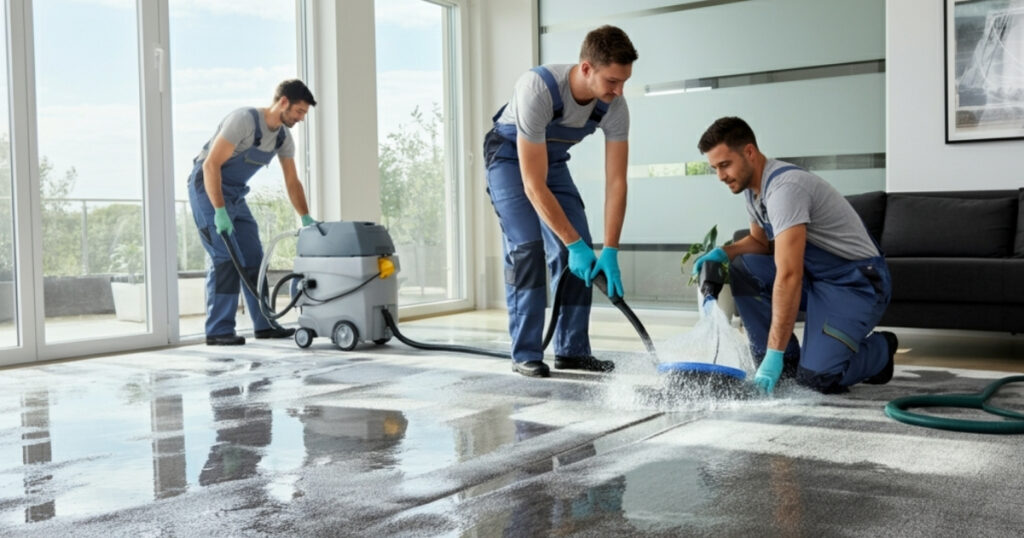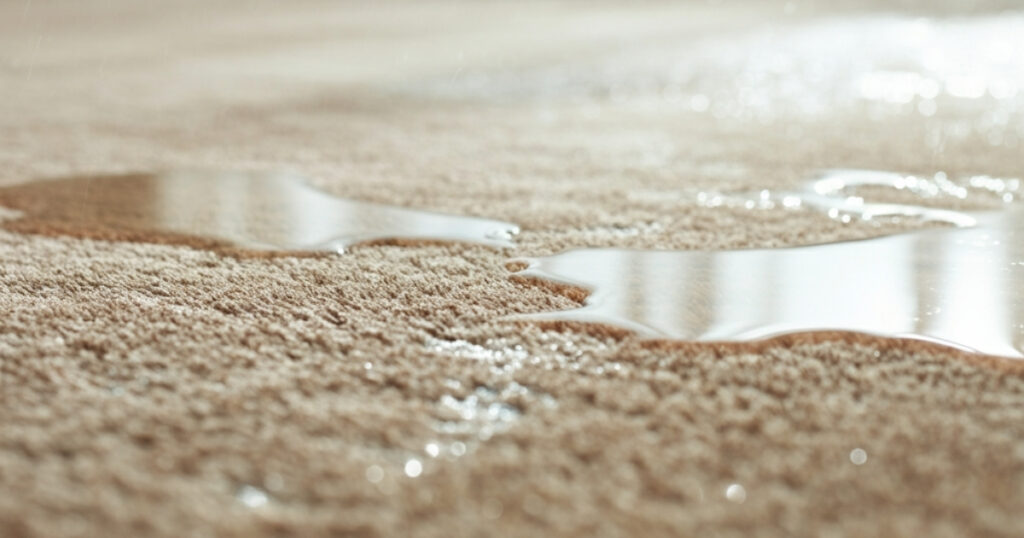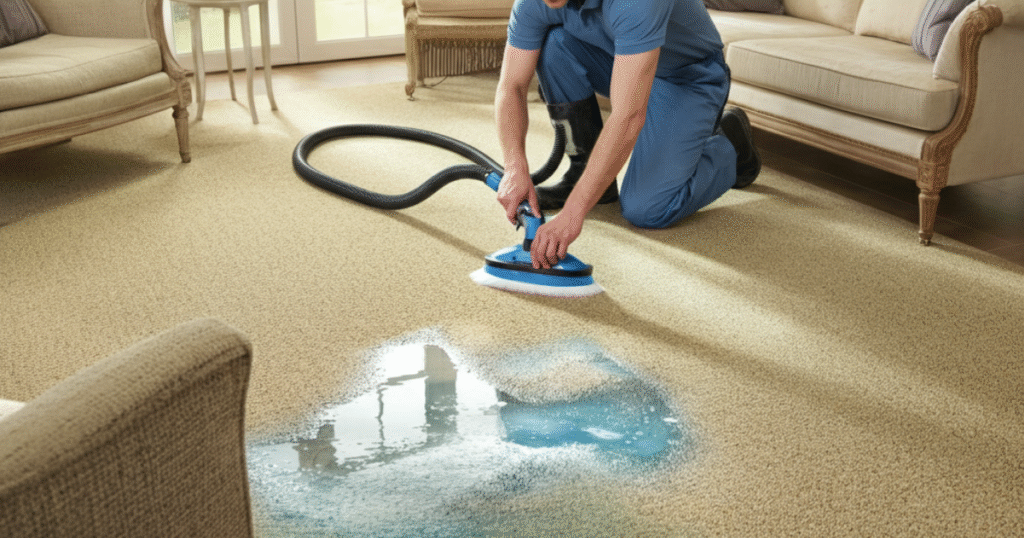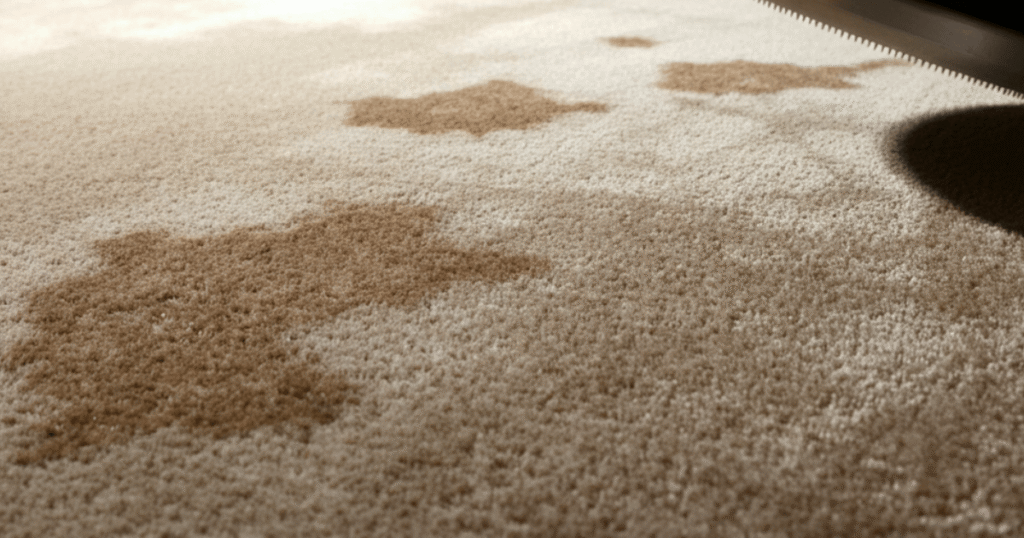Refinishing your hardwood floors brings new life to your home, but knowing how long before you can put furniture on refinished floors is crucial for protecting your investment. The typical wait time ranges from 24 hours to several weeks, depending on the type of finish used and environmental conditions.
Most homeowners can safely place furniture back after 3-7 days with proper precautions. However, rushing this process can lead to permanent damage like dents, scratches, or finish adhesion problems that could require costly repairs.
Understanding Floor Refinishing Drying Times
Water-Based vs Oil-Based Finishes
Water-based polyurethane finishes dry significantly faster than their oil-based counterparts. Additionally, water-based products typically allow furniture placement within 24-48 hours, while oil-based finishes require 3-7 days minimum.
Oil-based finishes penetrate deeper into the wood and take longer to cure completely. Furthermore, these finishes continue hardening for up to 30 days, though they become safe for furniture much sooner.
Environmental Factors Affecting Drying Time
Temperature and humidity play critical roles in determining how long before you can put furniture on refinished floors. Ideal conditions include temperatures between 68-72°F and humidity levels of 30-50%. High humidity slows the drying process significantly, potentially doubling wait times. Conversely, proper ventilation and air circulation can accelerate drying by several hours.
The Difference Between Dry and Cured Floors
Surface Dry vs Fully Cured
Understanding the distinction between dry and cured floors is essential for furniture placement timing. Surface dry means the finish feels dry to touch, typically occurring within 4-6 hours for water-based finishes. Complete curing happens when the finish reaches maximum hardness and durability. This process takes 21-30 days, though floors become safe for normal use much earlier.
Testing Floor Readiness
Professional contractors often perform simple tests to determine readiness. Press your fingernail gently into an inconspicuous area – if it leaves no mark, the floor is ready for light furniture. Another reliable method involves placing a small piece of tape on the floor. If the tape removes easily without damaging the finish, furniture placement is generally safe.
Safe Furniture Placement Guidelines
Protective Measures for Early Placement
Using furniture pads prevents damage during the initial weeks after refinishing. Felt pads distribute weight evenly and prevent scratching, while rubber pads can trap moisture and should be avoided. Move furniture carefully using proper lifting techniques rather than dragging. Even with protective pads, dragging can create micro-scratches that become visible over time.
Weight Distribution Considerations
Heavy furniture requires special attention when determining how long before you can put furniture on refinished floors. Large pieces like pianos or entertainment centers should wait at least one week, regardless of finish type. Distribute weight by placing plywood sheets under extremely heavy items. This technique spreads the load and prevents permanent indentations in newly finished floors.
Gradual Loading Process
Start with lighter pieces and gradually add heavier furniture over several days. This approach allows you to monitor the floor’s response and adjust timing if needed. Begin with essential items like beds and chairs, then add storage furniture and decorative pieces as the finish continues curing.
Common Mistakes to Avoid
Rushing the Process
Impatience leads to costly mistakes when refinishing floors. Moving furniture too early can create permanent damage that requires complete refinishing to repair. Professional contractors emphasize that waiting an extra day is always preferable to rushing and causing damage. The initial investment in refinishing is too significant to risk with premature furniture placement.
Using Wrong Protection Methods
Plastic sheeting under furniture creates moisture traps that can damage finishes. Instead, use breathable materials like felt or specialized furniture pads designed for hardwood floors. Paper towels and cardboard provide insufficient protection and can leave residue. Invest in proper furniture pads to protect your newly refinished floors effectively.
Ignoring Manufacturer Instructions
Each finish product has specific timing recommendations that should be followed precisely. Generic advice may not apply to your specific situation, so always check product labels. Professional-grade finishes often have different requirements than consumer products. When in doubt, consult with the contractor or manufacturer directly.
Special Considerations for Different Room Types
High-Traffic Areas
Entryways and living rooms experience more foot traffic and require longer wait times. These areas benefit from an additional 24-48 hours beyond standard recommendations. Consider the room’s function when planning furniture placement. Kitchens and bathrooms have different humidity levels that affect drying times accordingly.
Climate-Controlled vs Non-Climate-Controlled Spaces
Basements and seasonal rooms may require extended drying times due to temperature and humidity variations. Monitor these spaces closely and adjust timelines accordingly. Rooms with forced air heating or cooling systems typically dry faster due to improved air circulation. However, direct airflow from vents can cause uneven drying patterns.
Professional vs DIY Considerations
Professional Application Advantages
Experienced contractors understand optimal conditions and can provide accurate timing guidance. They also use commercial-grade equipment that ensures even application and proper drying. Professional finishes often cure more predictably than DIY applications. This consistency makes timing recommendations more reliable for furniture placement.
DIY Application Variables
Homeowners applying finishes themselves should add extra safety time to standard recommendations. Uneven application can create areas that dry at different rates. Temperature and humidity monitoring becomes more critical with DIY applications. Invest in a digital hygrometer to track conditions accurately throughout the process.
Frequently Asked Questions
1. Can I walk on refinished floors before placing furniture?
Yes, most refinished floors are safe for walking within 6-24 hours, depending on the finish type. However, wear clean socks and avoid shoes during this period.
2. What happens if I put furniture back too early?
Early placement can cause permanent dents, scratches, or finish adhesion problems. These issues often require spot repairs or complete refinishing to correct.
3. Do area rugs affect furniture placement timing?
No, area rugs don’t significantly impact timing requirements. However, ensure rugs won’t trap moisture against the newly finished floor surface.
4. How do I know if my floors are ready for heavy furniture?
Perform the fingernail test in an inconspicuous area. If pressing firmly leaves no mark, the floor can typically handle standard furniture weight.
5. Can I speed up the drying process safely?
Yes, using fans for air circulation and maintaining optimal temperature and humidity can safely accelerate drying. Avoid using heat sources directly on the floor.
6. Should I wait longer in humid conditions?
Yes, high humidity can double normal drying times. Monitor weather conditions and add 24-48 hours to recommendations during humid periods.
7. Are there different rules for engineered vs solid hardwood?
No, the finish type determines timing, not the wood construction. Both engineered and solid hardwood follow the same furniture placement guidelines.
8. What’s the safest furniture pad material to use?
Felt pads are ideal for newly refinished floors. They provide excellent protection while allowing the floor to breathe during the curing process.
Protecting Your Investment Long-Term
Proper timing for furniture placement is just the beginning of floor care. Regular maintenance, including proper cleaning and periodic recoating, extends the life of your refinished floors significantly. Read more about: What Color Furniture Goes Best With Dark Wood Floors?
Understanding how long before you can put furniture on refinished floors prevents costly mistakes and ensures your beautiful new floors maintain their appearance for years to come. Therefore, patience during this critical period pays dividends in long-term floor performance and durability.
As an Amazon Associate, I earn from qualifying purchases.





Pingback: How Long Should Floor Paint Dry Before Putting Furniture Back?